There is a multitude of horror TV offerings available today, whether it’s on traditional network TV (Supernatural, Evil) or on cable/streaming (Lovecraft County, American Horror Story, Stranger Things, Castle Rock, House on Haunted Hill, Creepshow etc.). Even genre classics like the original The Twilight Zone, The X-Files, Buffy the Vampire Slayer, Lost, Fringe, and Hannibal are embraced by old and new fans alike via streaming and Blu-ray. Horror fans are spoiled, not realizing how good they have it — I’m old enough to remember a dearth of horror TV programming in my childhood in the ‘80s. Don’t worry, I’m not huffing with contempt from my front porch (I don’t even have one!) — I marvel at the plethora of horror content available on so many platforms! There’s one horror TV classic that has languished in obscurity, a series truly befitting of the “cult” moniker: Friday the 13th: The Series.
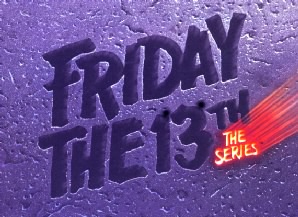
Never heard of it? I don’t blame you. A product of the late ‘80s, it’s the rare horror TV series that eked out 72 episodes over three seasons in a decade unkind to genre TV fare (Steven Spielberg’s Amazing Stories and the first TV reboot of The Twilight Zone were high-pedigree casualties of sitcom-starved TV audiences). Friday the 13th: The Series was part of Paramount TV studios’ bold experiment with first-run syndication in 1987. First-run syndication was a method in which a production company sold a TV series to network affiliates and independent TV stations to be aired outside the primetime evening hours. The majority of scripted syndicated TV shows had paltry budgets in order to be profitable and they were almost always sitcoms. If you’re over 30, you might remember Small Wonder, an execrable, humorless sitcom featuring a far-from-precocious robot girl, Vicki, that somehow managed to be popular enough to have lasted four seasons in syndication (sorry for dredging up those memories). Besides truly-horrifying sitcoms, syndication made Tales from the Darkside possible. Created by celebrated horror auteur George A. Romero, it was a low-budget series that nevertheless offered some agreeable adaptations of Stephen King, H. P. Lovecraft, Robert Bloch, and Richard Matheson; it managed to last four seasons, spawning a feature film version in 1990. Unlike Tales from the Darkside, Friday the 13th: The Series was from a major Hollywood studio and one of the first American TV series shot entirely in Canada, merging creative talent from both sides of the border that is still practiced by TV productions today. Despite not being well known to the general public today, Friday the 13th: The Series is a finely-crafted horror series that’s sure to delight contemporary horror fans.

One of the reasons Friday the 13th: The Series isn’t well known today is that it lived within the shadow of Paramount’s other syndicated offering in 1987, Star Trek: The Next Generation. When STAR TREK IV: THE VOYAGE HOME became the most successful Star Trek film at the box office in 1986 (saving the whales brings even the non-Trekkies to the multiplex), the studio wanted a new TV series to rake in more money, even bringing in original Star Trek creator Gene Roddenberry to create a new cast of characters (signing William Shatner, Leonard Nimoy, and the rest of the original cast would have been cost prohibitive for a TV series). The studio wanted to pair the new TV series with another syndicated offering, so they turned to Frank Mancuso Jr., producer of Paramount’s FRIDAY THE 13th movies. Fans of slasher titan Jason Voorhees were likely disappointed when they tuned in to the first episode of Friday of the 13th: The Series in September 1987: neither a machete nor hockey goalie mask were in sight! Mancuso kept the franchise name to draw in viewers, which was both a blessing and a curse, which seems apropos for the series about cursed objects!
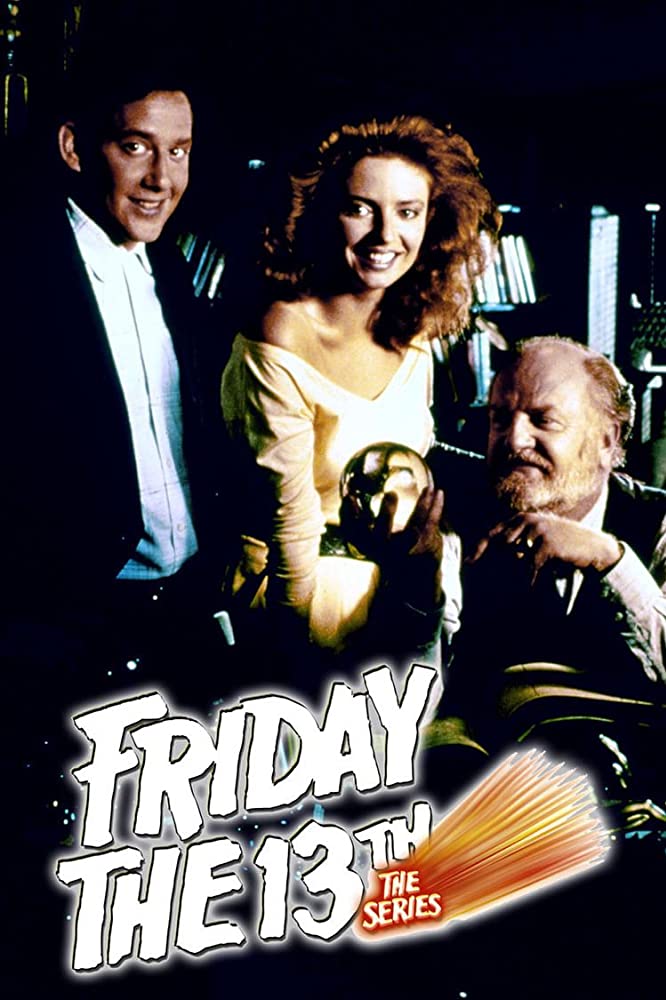
Set nowhere near Crystal Lake in the Midwest metropolis of Chicago, the series was semi-anthological by design, as cousins Mickey and Ryan inherit their Uncle Lewis’ antique shop, Curious Goods, not knowing Lewis Vendredi made a deal with the Devil. In exchange for immortality, Uncle Lewis sold cursed antiquities to unsuspecting customers, resulting in their deaths and fresh souls for Satan. In the series pilot’s opening, Uncle Lewis is trying to escape the forces of Hell, as he has reneged on the dealt, but he’s caught and sent, via a flaming elevator, straight to Hell. Mickey, Ryan, and magician/occultist Jack Marshak, a former friend of Uncle Lewis who had procured many of the items sold in the shop, must now go over the store’s ledger and retrieve the sold cursed objects. It’s a thankless task and each week, the trio risk their lives, as the owners are unwilling to part with their mystical possessions.

While Star Trek: The Next Generation was budgeted at over $1 million an episode, unheard of for first-run syndication or network TV at the time, Friday the 13th: The Series had a paltry $500,000 per-episode budget. However, the series was shot in Toronto, Canada, which helped stretch each episode’s production budget. Most horror fans are aware of Canada’s reputation as a tax-shelter haven for many a horror film production in the late ‘70s and early ‘80s, producing a variety of memorable and forgettable genre film fare; the term “Canuxploitation” has even been coined for Canadian genre films by writer/critic Paul Corupe, creator of the website of the same name (it’s truly one of the finest online resources of genre films). When Brian Mulroney was elected prime minister in 1984, his Progressive Conservative government removed the tax credit, realizing that it had been abused by many American and international productions. While the tax credit was gone, a much-lower Canadian dollar (worth approximately $0.69 USD in 1987) and experienced TV/film production crew still made Canada an attractive alternative for film productions (Toronto, Canada’s biggest and most diverse city, has long been a stand-in for New York City, despite being much cleaner than its American counterpart).
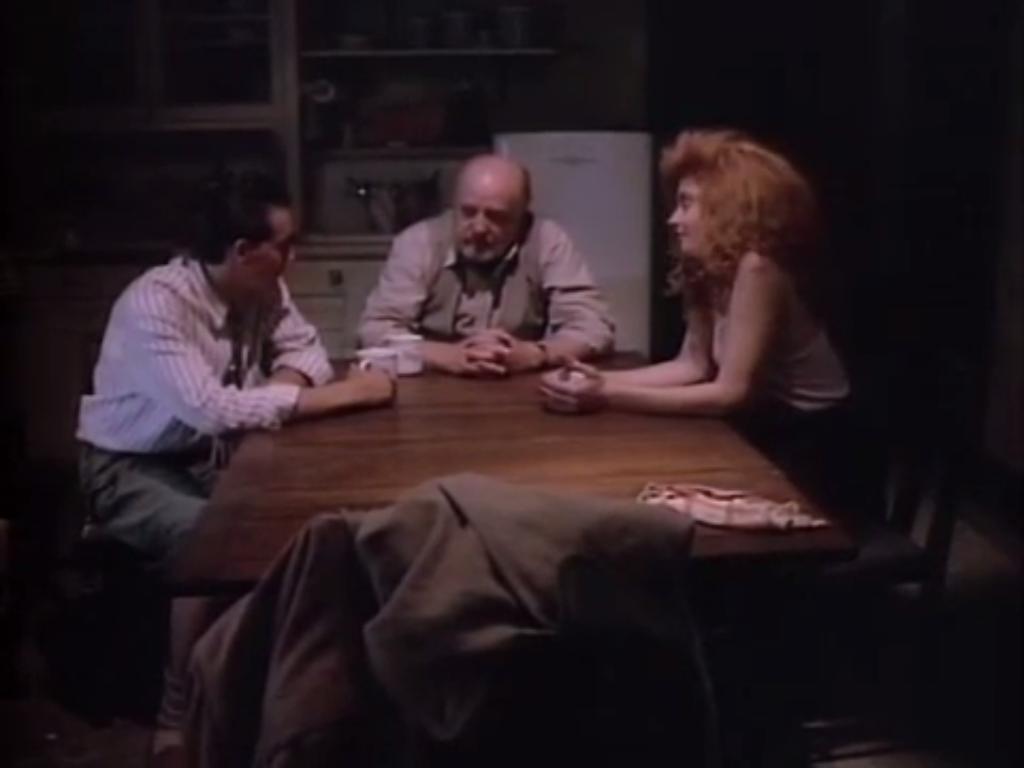
Friday the 13th: The Series was one of the first American TV productions to film regularly in Canada (21 Jump Street was another pioneer, filmed on the other side of the country in Vancouver in 1987). Because of Canadian film/TV production regulations at the time, American productions filmed in Canada required a specific number of Canadian actors and crew to be used, resulting in two of Friday the 13th’s three leads to be Canadian: Quebec pop singer Louise Robey (credited as “Robey” in the show’s credits) as Mickey (she of the fiery mane of ‘80s hair that mesmerized me and countless other adolescents during the series’ run) and veteran character actor Chris Wiggins as Jack; the lone American lead was John D. LeMay as Ryan. The majority of the show’s writers would be situated in Los Angeles, while most of the directors and guest cast would be Canadian; the lead guest star would often be a recognizable American actor (David Proval, Cliff Gorman, Billy Drago, etc.). Because of the series’ Canadian content (known up here simply as “Can-con”), it was an easy sale to Canadian TV stations, but packaged with Star Trek: The Next Generation (and later, Paramount’s third syndicated genre offering, the Canadian-shot War of the Worlds, in 1988), American TV stations bought and broadcast it, making Friday the 13th: The Series the second-highest-rated scripted syndicated TV show, right behind TNG (only gameshow stalwarts Wheel of Fortune and Jeopardy ranked higher in the syndication ratings). The series received good reviews from many TV critics, but was scorned by conservative Christian groups in the USA, appalled by the occult themes and shocking violence.

The series’ violence may not seem very gory compared to today’s cable and streaming offerings, but in the late ‘80s, it was considered risqué. Throats were slashed, bodies mangled in a mulcher, melted into a pool of goo, or torn apart by a werewolf brought to life by a cursed film camera. I remember delighting in the excessive violence at the time, as I watched the series each week quietly in our basement, careful not to bring any attention to my very Christian mother, who already disapproved of my love of horror movies. Revisiting select episodes on DVD, I don’t find the gore particularly nasty — it’s tame compared to what I’ve seen in Hannibal — but it’s still fun to see the creative deaths fashioned by some of the more eclectic cursed items. While the series was a ratings success, I speculate that its sudden cancellation midway through the 20th episode of its third season (26 episodes had been commissioned) was the result of stations refusing to air the series after viewer complaints (a similar case occurred with that other ‘80s slasher icon, Freddy Krueger, as he played Rod Serling to a series of morbid, violent tales in Freddy’s Nightmares, a very low-budget anthology that lasted two seasons from 1988-1990 and isn’t particularly memorable to anyone outside of Freddy completists). Friday the 13th often aired after TNG in the early evening in many markets, so I can picture many parents aghast at what their kids were watching just before dinner.
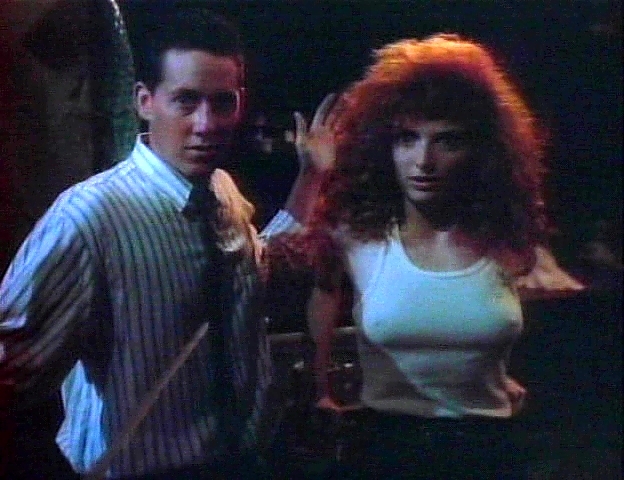
Friday the 13th: The Series begins with a memorable pilot episode, “The Inheritance”: spoiled socialite Mickey delays her marriage to yuppie lawyer Lloyd in order to check out the antique store her uncle, whom she never met, left to her and cousin-by-marriage Ryan, as his only surviving relatives. She’s curious, but she wants to sell the shop, make some money, and continue with her life. Art-school dropout Ryan resists the idea of selling the shop, and the two of them try being temporary retailers, selling an antique porcelain doll to a man looking to spoil his daughter, Mary (played by a very young Sarah Polley). Jack shows up, informing the cousins that all the items in the store are cursed, including the doll Mickey just sold. The cursed objects are dangerous because as they reward their owners, there is a terrible price to be paid: someone has to die! They try to buy back the doll, but Mary is too attached to the doll, which has already set its evil sights on Mary’s strict stepmother. Mickey, Ryan, and Jack retrieve the doll, but too late to save Mary’s stepmother. The pilot episode, directed by Canadian horror filmmaker William Fruet (DEATH WEEKEND, SPASMS, KILLER PARTY) does a good job of setting up the series premise while establishing its dark, often bleak, tone; he would return to direct several episodes. The cursed doll is creepily effective, as she turns her head and scowls at Mary’s stepmother, a worthy successor to The Twilight Zone’s Talking Tina in “Living Doll,” predating Chucky by a year. The Curious Goods trio are a likeable bunch and though it’s Robey’s first acting role, she’s very solid as haughty Mickey. As the series progressed, the characters would prove to grow and learn new occult skills as they battled animated scarecrows, vampires, demonic quilts (yes, you read that right — and in a two-parter!), animated wax figures, dead bikers, and haunted foghorns!
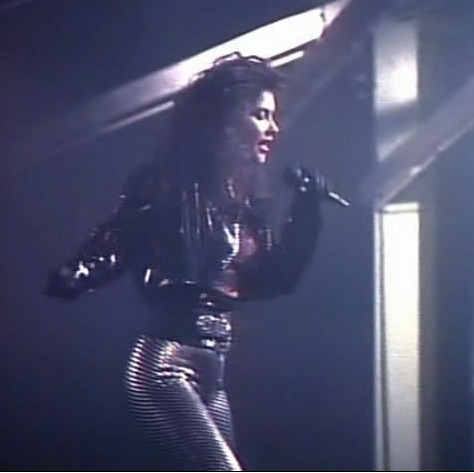
Some of the items’ owners are innocents, oblivious to the danger, like Mary, but many others are swayed by promises of wealth, power, and fame. Some owners are blinded by love, such as the scientist father who kidnaps sex workers (and Mickey’s former college roommate) in order to extract brain fluids through a cursed syringe to save his daughter from a rare disease (“Better Off Dead”). Others are victims of their own insecurities and vanity, using the antiques to make them youthful again, fronting a punk rock band (“A Cup of Time”), becoming a successful supermodel (Face of Evil”), or becoming a famous surgeon, courtesy of a cursed scalpel once used by Jack the Ripper (“Doctor Jack”). The Curious Goods’ trio realize that they have no choice but to track down and retrieve all the items Uncle Lewis sold, a grim task that would yield few rewards and much strife throughout the series’ run — it’s a somber, lonely task, but somebody’s gotta drive the narrative along! Many episodes end depressingly, the item of the week reclaimed, but usually one of the lead’s friends, relatives, or dates ends up dead.
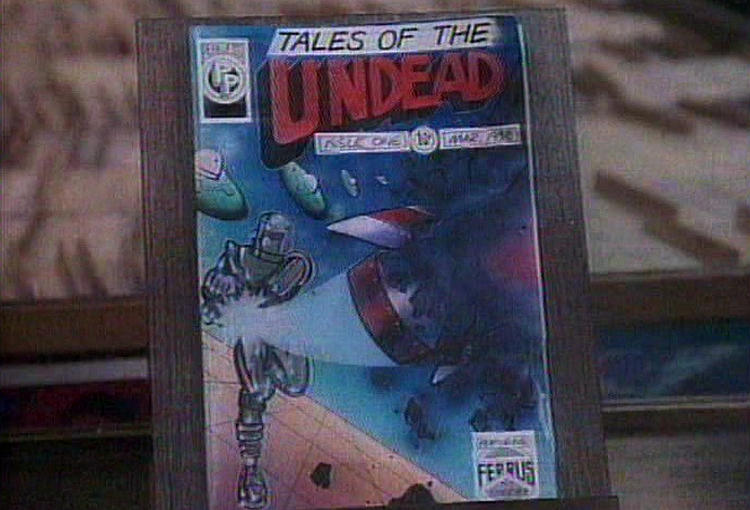
The special effects created for the series were surprisingly good for its modest budget. In “Tales from the Undead”, the series uses comic book panels (long before Ang Lee’s HULK) and creates an impressive Iron Man analog in Ferris the Invincible, created by Golden Age comic-book creator Jay Star (Ray Walston), who seeks revenge on the people who stole his creation. A cursed comic book is used to bring Ferris to life to dispatch Star’s nemeses (cursed or not, I still bristle seeing people folding up a rare Golden Age comic book). In “Cupid’s Quiver,” directed by acclaimed Canadian auteur Atom Egoyan, a very angry-looking Cupid statue becomes animated and shoots a “love” arrow at specific women, making them instantly smitten with pathetic college student, Eddie; sadly, after a few hours of “romance”, Eddie is driven to murder his victims. It’s a simple effect, but it’s clever enough demonstrating that the cursed objects can be helpful to their owners, but with very sinister results. The statue is the creepiest depiction of Cupid I’ve seen on screen and it would surely scare people away, were it not cursed. Actor Denis Forest, a veteran of many genre movies and TV shows, makes the first of three memorable appearances as various seedy losers. If you thought Canadian actors made perfect monsters and serial killers in The X-Files and Millennium, Forest paves the way for them all here.
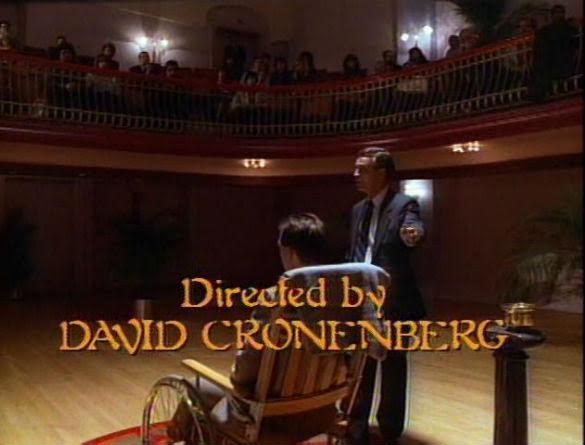
A special mention must be made for David Cronenberg’s sole contribution to Friday the 13th: The Series, “Faith Healer,” one of the series’ best episodes. Not only does it comment on the rash of hypocritical televangelists who fell into disrepute in the late ‘80s, but it highlights the ability of the cursed objects’ abilities to corrupt even the most honorable of people. Scam artist Stewart Fishoff (Miguel Fernandes) fakes healing people in churches, but when he finds a pristine white glove that can cure people of disease, he begins to become rich and famous. However, the glove begins to burn Fishoff’s hand until he touches another person with the glove, killing them instantly. It draws the attention of Jack’s friend, Jerry (Cronenberg regular Robert A. Silverman), a man who debunks phony faith healers, but who also suffers an incurable disease. Through Cronenberg’s deft direction, it’s a body horror tale that quietly depicts a tragic course of action for Jerry, but one that’s utterly compelling. Cronenberg filmed the episode shortly before DEAD RINGERS, one of his last body-horror films, but it’s a pity he never returned to direct another episode.

Friday the 13th: The Series drew ire from parents groups and disgruntled Jason fans, but if it had been given a different name, I believe it would have avoided controversy. While its stories were often downbeat and depressing, it created three memorable lead characters who grew as the series progressed (John D. LeMay would ask to be released from his contract after the second season to pursue other acting opportunities, such as battling Jason in JASON GOES TO HELL: THE FINAL FRIDAY, a few years after the series ended). It generated plenty of horror delights on a modest budget, but also demonstrated that a Canadian production was more than capable in providing American TV audiences quality content, inspiring future genre productions like The X-Files, Masters of Horror, and Supernatural. Though not a long-running series, Friday the 13th produced sufficient episodes to be seen in reruns and is still available on DVD (it’s one of many TV productions from the late ‘80s to the early ‘00s that was shot on film, but edited on videotape as a cost-saving measure, so the series will never be in high definition unless Paramount decides to go back to the original film elements and scans them). Thankfully, it’s also the subject of a behind-the-scenes book, Curious Goods: The Making of Friday the 13th: The Series, by author Alyse Wax, so fans and newcomers alike can read all about the series in detail (at the time of this writing, my own copy is en route). The next time you’re perusing an antique store, make sure you check out the items carefully — you never know, they might be cursed!
Tags: Andrea Roth, Art Hindle, Atom Egoyan, August Schellenberg, Billy Drago, Canada, Carrie Snodgress, Chris Wiggins, Cliff Gorman, Colm Feore, David Proval, Denis Forest, Denise Matthews, Enrico Colantoni, Frank Mancuso Jr., Fritz Weaver, Gary Farmer, Henry Czerny, Horror, James Russo, Jill Hennessy, Joe Seneca, John Byner, John D. LeMay, Julius Harris, Keye Luke, Lolita Davidovich, Louise Robey, R.G. Armstrong, Ray Walston, Robert A. Silverman, Sarah Polley, The 1980s, Tia Carrere, TV, vanity, Zack Ward

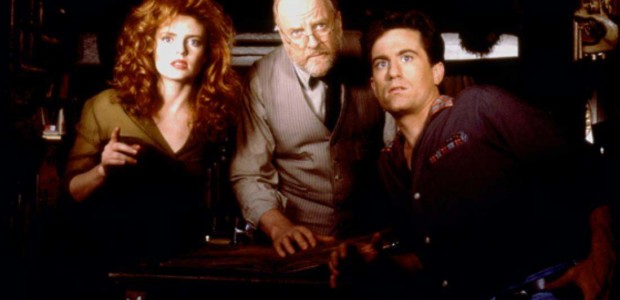
No Comments